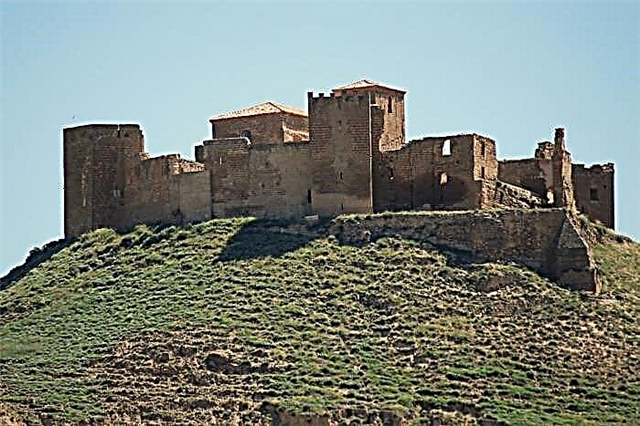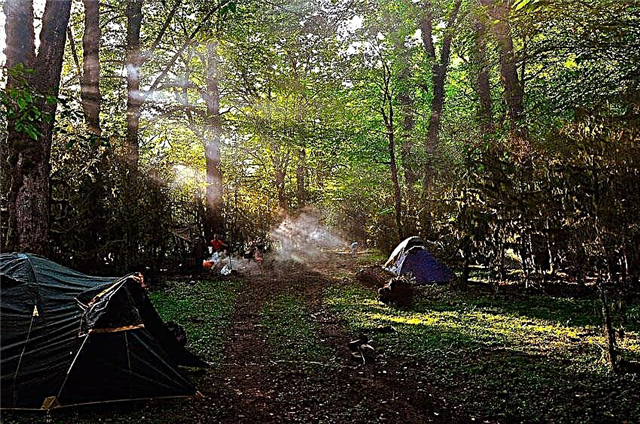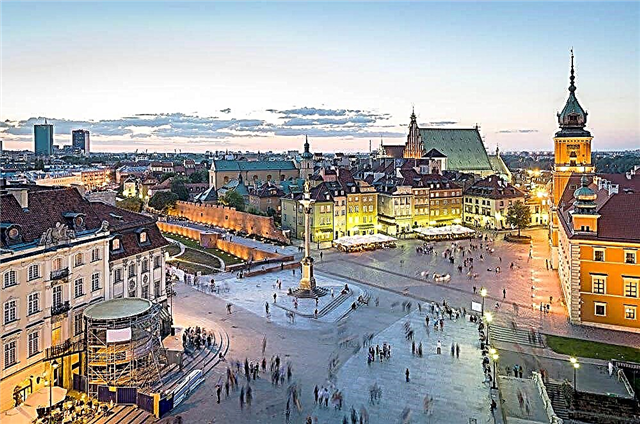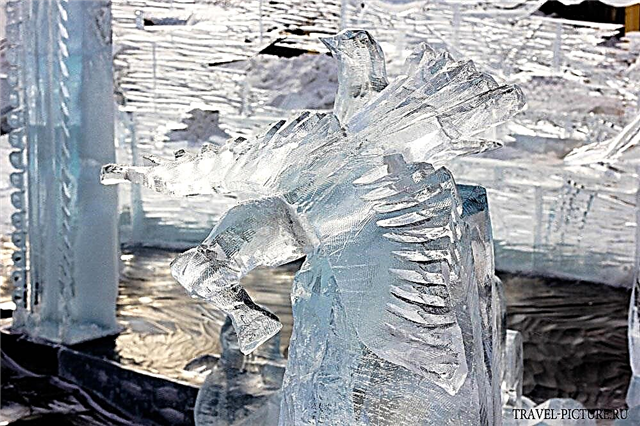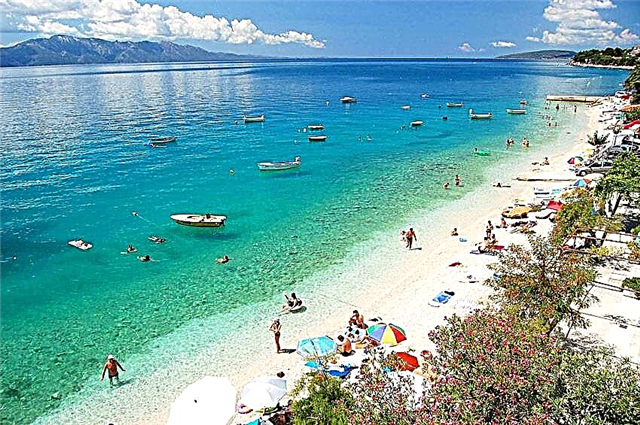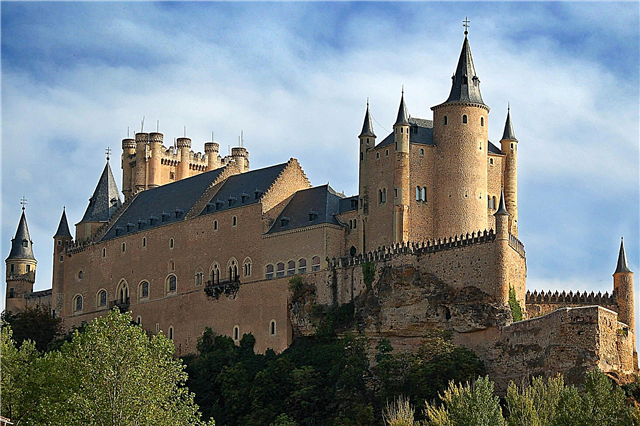For several centuries, the Spanish Empire was the leading state on the European continent. The conquests in Latin America provided Spain with precious metals and new products that quickly gained popularity in Europe. During the period of prosperity, castles and fortresses were erected throughout the country. They became not only defensive points, but also festive residences of monarchs and wealthy feudal lords.
Today Spain is one of the most popular resorts in the world. Millions of people come here every year for more than just sunny beaches. Spanish fortresses attract tourists with their architectural and historical value. They combine elements of architecture borrowed from different cultures. They capture the history of not only one country, but the whole of Europe.
The most interesting fortresses and castles in Spain
List, photos with names and descriptions of medieval castles!
Alcazar
The first fortifications in Segovia were built during the period of the Roman conquest, but the modern castle dates back to 1120. The Alcazar was rebuilt and restored several times. It was the royal residence, later - a prison, archive and the building of the artillery academy. Today, the Alcazar is one of the most popular castles in Spain and houses a museum that houses weapons, paintings and many historical artifacts.

Butron
The castle is located near the city of Bilbao. The exact date of construction is unknown, but Butron became a full-fledged fortress in the XIV century, when all the towers and fortified walls were erected. There are many legends associated with the period of internecine wars and the castle of Boutron. According to one of them, the owner of the fortress, distinguished by an ardent disposition, drove in to hunt in the possession of the de Mujico family. And after meeting and quarreling with the owner of the land, he killed him. Since then, the ghost of Juan Alfonso de Mujico has appeared in the halls of the castle.

Colomares
Construction commemorated the 500th anniversary of the discovery of America in 1987 in Andalusia. One of the most beautiful castles in Spain was built by a doctor of medical sciences and two of his assistants. Colomares combines Roman, Spanish and Moorish styles, reflecting the milestones in Spanish history. Throughout the castle, there are symbolic decorative elements dedicated to the expedition of Christopher Columbus.

Alhambra
The castle was built in the east of Granada during the Moorish conquest. From the 13th to the 15th century, Granada was the capital of the Emirate of Granada, so the Alhambra was of strategic importance. After the Christian conquest, some of the buildings were demolished, including the ancient mosque. Many fortifications and internal halls of the castle have survived to this day. They are decorated with ornaments in the Moorish style and Arabic script.

Coca
The fortress is located near the city of Coca, in Segovia. The courtyard is surrounded by double walls with rounded towers. The castle was built in the 15th century, during the reign of Enrique IV. Today the castle houses a school for foresters. The Mudejar style in which the fortress was built combines Moorish architecture and Gothic. It expresses the mixture of Muslim and Christian cultures in Spain.

Belmonte
The royal favorite, Juan Paceca, organized the construction of the castle in the second half of the 15th century. Here he sheltered for some time the Castilian princess, the future queen of Portugal, Juana Beltraneja. The first fortifications were built here by the Romans, who developed gold mines nearby. By the beginning of the 19th century, the castle was abandoned, but was soon restored by Empress Eugenia, who also restored many fortresses throughout Spain.
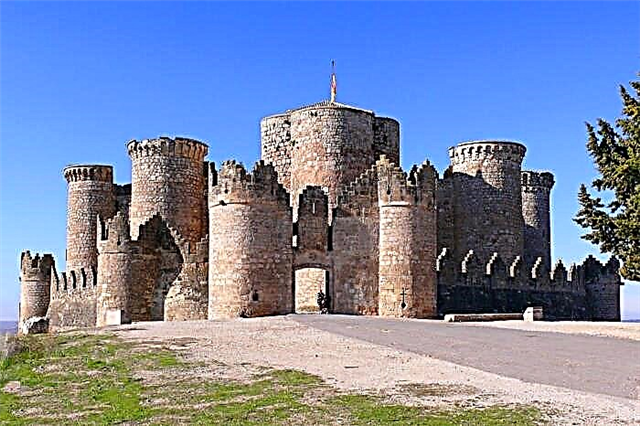
Javier
In the X century, near the border of Aragon and Navarre, a castle was built, which changed owners several times. From the 10th to the 13th century, Javier was completed and strengthened. One of its famous owners was Francis Xavier. In 1886, he helped stop the plague epidemic, for which he was canonized. Today, the castle houses a museum dedicated to him, and pilgrims come to Javier every spring.

Loarre
The main task of the citadel, built in the 10th century, was to protect against Muslim attacks. Until the 13th century, the castle was fortified and completed. Later it became a royal residence, and by the 19th century it was abandoned. Today, the castle is a historical and cultural monument; an ancient Romanesque church was built on its territory. Loarre is considered one of the best preserved Roman fortresses in Europe.

Olite
The king of Navarre, Charles the Noble, built the castle in the 15th century. The construction plan has not been approved, so there is no symmetry in the fortress. The Olita castle immediately became a royal residence. In 1512, Navarra was captured by Spain and the castle was abandoned. The restoration was carried out in the 20th century, under Francisco Franco. Today, the picturesque towers and museums, where paintings and decorations are collected, attract many tourists.
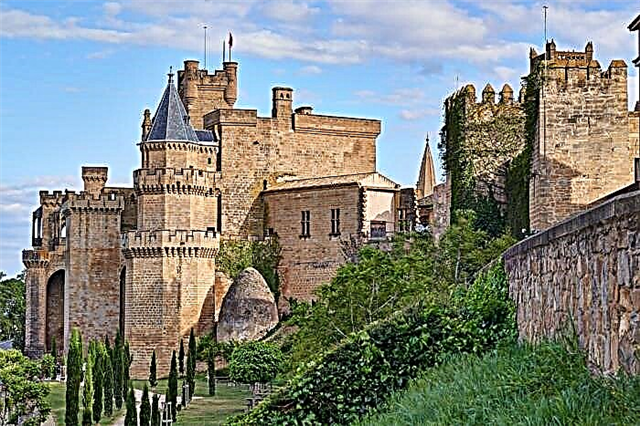
Tossa de Mar
The castle is one of the last walled cities on the European continent. Tossa de Mar was built in the 12th century to ward off pirate raids from North Africa. Inside the fortress there are ancient churches, the governor's house, which houses the city's history museum, and a hospital. The Tossa de Mar Museum houses archaeological finds, and the village is full of cafes and restaurants.

San Servando
On the site of the modern castle, there were Roman, Visigothic and Moorish fortifications. The first of them appeared here in the 7th century. In the XI century, the fortress was turned into a monastery, but soon, due to numerous raids by Muslims, it lost its religious purpose. In the 19th century, the castle was under threat of destruction. Later, it became the first historical and artistic national monument in Spain.

Manzanares el Real
The land near Madrid was donated by Juan I to Pedro Gonzalez de Mendoza for his help in the battle of Aljubarrota in the 14th century. The first castle was built here at the end of the XIV century, but has not survived to this day. In the XV-XVI centuries, the new fortress was expanded and completed. Today, many tapestries and medieval armor are kept here, cultural events and concerts are held here.

Lorca
One of the largest castles in the southeast of Spain was built in the 9th century. Until the middle of the XIII century, it belonged to Muslims, but after it was captured and became a stronghold of Christians during the Reconquista. The fortress has survived to this day in good condition, but in 2011 it was damaged by an earthquake. Medieval performances and performances are held on the territory of the castle.

La Mota
The modern castle was built in the 15th century, but the Muslim fortifications in its place date back to the 12th century. After the Reconquista, a prison was located here. The architectural style of the fortress combines Gothic, Renaissance and Mudejar. The castle is extremely popular with tourists these days. It hosts concerts, festivals and night tours of the walls and halls of the fortress.

Bellver
The King of Mallorca, Jaime II, built a Gothic castle with perfectly circular interior walls at the beginning of the 14th century. According to one version, Bellver is a copy of the ancient fortress of Herodium in Israel. Today, there is a history museum with many exhibits, including a collection of sculptures. Music festivals are also held in the halls of the castle every year.

Peñafiel
The first written records of the castle date back to the 10th century. It was actively used in the Spanish civil wars, and was destroyed in the 15th century. It was later acquired by the Telles-Chiron family, who had owned it for several centuries and restored the castle. Nowadays, a historical museum and a museum of wines of Spain are organized here.

Almodovar
The oldest fortifications were built here in the 8th century.The castle was of strategic importance close to an important trade route. In the 14th century, reconstruction was carried out, and in the 16th century, the fortress was sold to private hands. The castle has 3 levels, including a dungeon. The royal dressing room, the armory yard and many other halls with museum expositions are located here.

Alhaferia
The modern Moorish castle was built in the 11th century, near Zaragoza. One of the few castles of Muslims, it has survived to this day in excellent condition. In many ways, this happened due to the fact that the Muslim ruler of Zaragoza abdicated power, recognizing himself as a subject of the kingdom of Aragon and taking the side of Christians during the Reconquista.
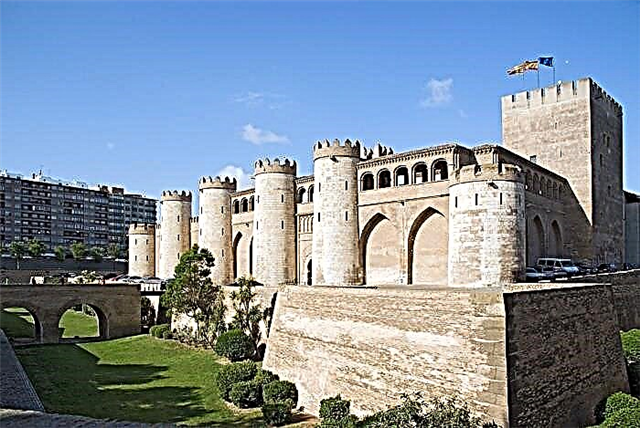
Villena de Atalaya
The fortress was built in the XII century, during the Muslim conquest. The king of Aragon, Jaime I, several times besieged and stormed the castle, but it was not possible to capture it. In the 17th century, the fortress was badly damaged and abandoned. In the XX century, restoration work was carried out, and a historical museum is located in the castle.

Almansa
The castle was built by the Muslim Almohad dynasty in the XII century on the "Eagle's Hill". Later, during the Reconquista, it was captured by Jaime I, and in the 13th century transferred to the Knights Templar. In the 16th century, it was abandoned and destroyed, and restoration work has been going on from the 20th century to the present day. The fortress walls, interiors and the citadel have been preserved here.

Ponferrada castle
In 1178, the Knights Templar began building a castle near the city of Ponferrada, in northern Spain. Its main task was to protect the pilgrims going to Santiago de Compostela. The castle has survived to this day in good condition, thanks to several restorations. Here is the Templar Library, which houses thousands of books, including those written by Leonardo da Vinci.

Fortress Morella
The eponymous fortress in the city of Morella was erected by the Moors in the X-XI centuries, on the foundations of the ancient fortifications of the Romans. It is located on a mountain, over a thousand meters above sea level. Nowadays, there is a village within the fortress. All the rings of the fortress walls, towers and donjons have been preserved. Few tourists come here, so the streets of the town are almost always quiet, and picturesque views of the valley open from the top of the mountain.

Cuellar
The medieval castle throughout its history belonged to the Cuellar family and was considered one of the richest in all of Spain. After the 18th century, it ceased to be used as a fortress and began to serve as a residence. Many jewelry and paintings were kept here, as well as a famous collection of weapons. But in the 19th century, the castle was plundered. Currently, Cuellar is a private property, but some of the rooms, including the historical museum, are open to tourists.

Monteagudo
The castle was built by Muslims, presumably in the X-XI centuries, and the first written mention of it dates back to 1078. During the late Reconquista, Monteagudo became a border fortress between the kingdoms of Murcia and Aragon. Nowadays, the fortress is being restored, excavations are underway on its territory, where many ancient artifacts have been discovered. There is a 14-meter statue of Jesus Christ at the top of the castle.
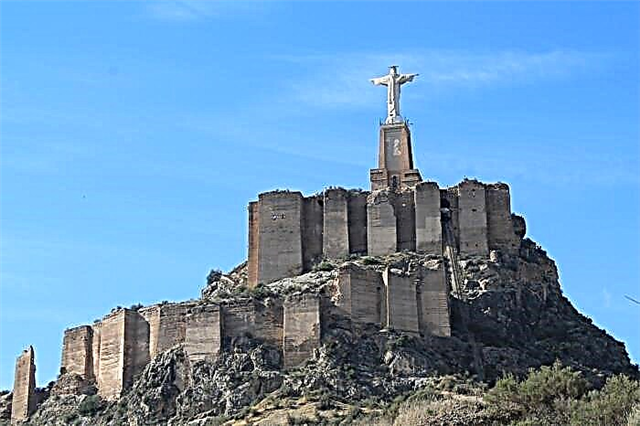
Alarcon
The fortress is located in the province of Cuenca, on a mountain next to the Jucar River. In the Middle Ages, it was an important strategic point that allowed control of the surrounding territories. Several rings of the fortress walls and the donjon, in which the hotel is located, have survived to this day. It houses collections of armor and weapons, and hosts fancy-dress feasts.

Fortress Santa Barbara
The castle was built in the 9th century, but archaeological artifacts from the periods of the Roman and Iberian conquest have been found on its territory. The fortress is located on the Mediterranean coast, in the city of Alicante, and is open to tourists all year round. There are many museum exhibits that house ancient ceramics and a collection of weapons. Several bastions, a keep and the ruins of a church have survived.

Santa catalina
The castle was built in 1931 in the style of 16th century fortresses, on the site of a medieval chapel. During World War II, a network of fortifications and bunkers was built around the tower, which has survived to this day. Since 1933, Santa Catalina has been open to the public, but only at the end of the 20th century became one of the popular symbols of the city of Tarifa.

Guzman El Bueno
The first fortifications on the site of a modern castle in the city of Tarifa were erected at the end of the 10th century. Throughout its history, the fortress played an important strategic role, being an obstacle on the way from Africa to Europe. In the XII-XIII centuries, she defended the city from North African pirates. The castle has been completely preserved, behind its walls there is a donjon and a chapel, and on one of the towers there is a medieval catapult.

Pope Moon
The fortifications in the town of Peñiscola were built during the Arab conquest, but the modern fortress was erected by the Knights Templar in the 13th-14th centuries. The fortress has been well preserved to this day, including the system of secret underground passages. During the years of church schism, Benedict XIII took refuge here, who headed a part of the Catholic Church and was nicknamed "Pope Luna" in Spain. It was by his nickname that the fortress was named.

Montearagon
The castle was built and fortified at the end of the 11th century, near the village of Chisena, to support the siege of Huesca. Later, Montearagon became a monastery, but retained its defensive function. At the end of the 19th century, a gunpowder warehouse was located here, which soon exploded, destroying the castle. No restoration was carried out, so Montearagon has survived to this day in ruins.
